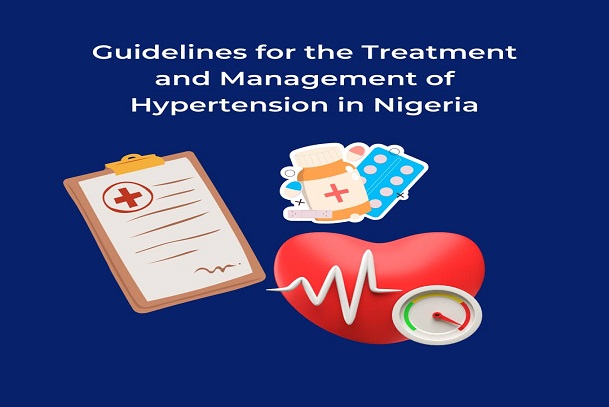 Wash your hands regularly and wear a face mask.
Learn more
Wash your hands regularly and wear a face mask.
Learn more

Hypertension is a known cause of morbidity and mortality in Nigeria. It is a common, non - communicable disease that has been linked to other conditions like myocardial infarction, stroke, renal failure, and even death if not treated appropriately and in a timely fashion. In Nigeria, it has been estimated that at least 1 in 4 people have hypertension. A prevalence of about 28.9% was estimated as the percentage of the population that suffers from hypertension. This shows that hypertension is a condition that requires public health awareness as well as a structured treatment plan for a healthier population.
The Need for Proper Management of Hypertension
In consideration of the global burden of hypertension in various populations, there is a demand for a comprehensive management guideline that satisfies both the patient’s and clinician’s needs. Patients need to be assured of a reduction in elevated blood pressure whenever they adhere to the drugs and other principles of management. Clinicians require a validated, evidence-based guideline for the treatment of hypertension that is standardized and dynamic. These needs were met by the JNC report.
The Eighth Joint National Committee on Hypertension
The Joint National Committee on Hypertension (JNC) was appointed to provide reports that serve as guidelines for the detection, evaluation, treatment, and prevention of high blood pressure. The committee published its first report in 1976 with the 8th report being the most recent one.
Recommendations of the JNC
The recommendations made by the JNC are evidence-based and describe guidelines for treatment goals, selection of antihypertensive drugs as well strategies for starting and complementing antihypertensive drugs.
Table Showing Different Recommendation Strengths
|
Grade |
Strength of Recommendation |
Explanation |
|
A |
Strong recommendation |
There is high certainty based on evidence that the net benefit is substantial. |
|
B |
Moderate recommendation |
There is moderate certainty based on evidence that the net benefit is moderate to substantial or there is high certainty that the net benefit is moderate. |
|
C |
Weak recommendation |
There is at least moderate certainty based on evidence that there is a small net benefit. |
|
D |
Recommendation against |
There is at least moderate certainty based on evidence that it has no net benefit or that risks/harms outweigh benefits. |
|
E |
Expert opinion |
"There is insufficient evidence or evidence is unclear or conflicting, but this is what the committee recommends." The net benefit is unclear. The balance of benefits and harms cannot be determined because of no evidence, insufficient evidence, unclear evidence, or conflicting evidence, but the committee thought it was important to provide clinical guidance and make a recommendation. Further research is recommended in this area. |
|
N |
No recommendation for or against |
"There is insufficient evidence or evidence is unclear or conflicting." The net benefit is unclear. The balance of benefits and harms cannot be determined because of no evidence, insufficient evidence, unclear evidence, or conflicting evidence, and the committee thought no recommendation should be made. Further research is recommended in this area. |
Conclusion
The JNC report for detecting, investigating, treating, and preventing hypertension is a relevant guideline for the management of hypertension and should be used as applicable in clinical settings.